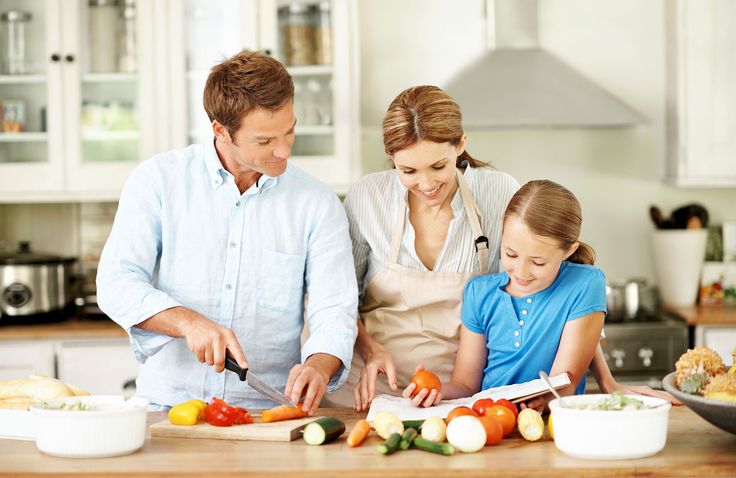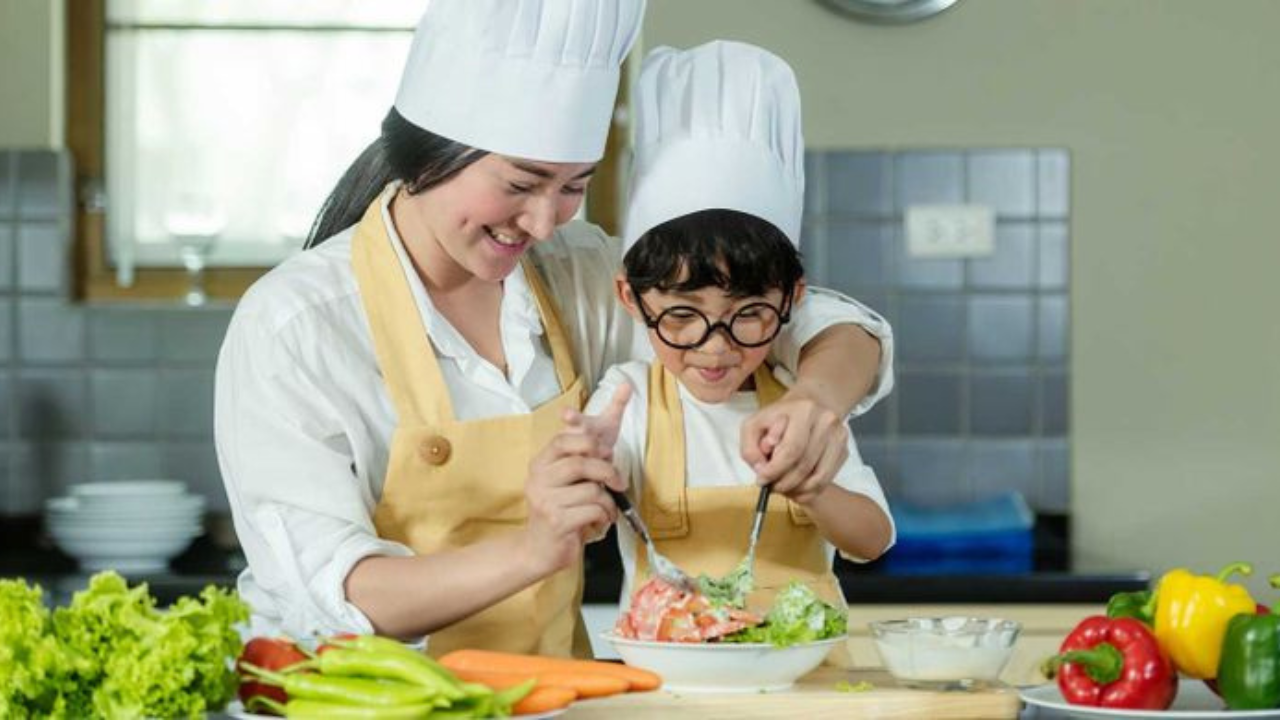Cooking with kids is one of those magical activities that blends fun, learning, and bonding into a single, delicious experience. As a parent, I’ve watched my own children transform from curious onlookers to confident little chefs, proudly presenting their (sometimes slightly lumpy) creations at the dinner table. Getting kids involved in the kitchen isn’t just about making food—it’s about nurturing creativity, building life skills, and creating memories that last a lifetime. In this guide, I’ll share practical tips, age-appropriate tasks, and heartfelt insights on how to raise little chefs, all while making the process enjoyable for both you and your kids.
Why Cooking with Kids Matters
Cooking is so much more than preparing a meal. It’s a hands-on way to teach kids about math, science, and even culture, all while fostering independence and confidence. When kids measure ingredients, they’re practicing fractions. When they watch dough rise, they’re learning about chemical reactions. And when they chop veggies for a stir-fry, they’re connecting with the food they eat in a meaningful way.
Beyond the practical skills, cooking together strengthens family bonds. There’s something special about working side by side, laughing over a spilled flour mess, or sneaking a taste of cookie dough when you think no one’s watching. Plus, kids who cook are more likely to try new foods, develop healthy eating habits, and feel a sense of accomplishment. It’s a win-win for everyone.
But let’s be real—cooking with kids can also feel overwhelming. The kitchen can get chaotic, and patience is often tested. That’s why I’ve put together this guide to make the process fun, safe, and rewarding. Whether you’re starting with a toddler or guiding a preteen, here’s how to get your kids cooking with confidence.
Setting the Stage: Creating a Kid-Friendly Kitchen

Before you dive into recipes, set up your kitchen to be a welcoming space for little chefs. Safety and accessibility are key.
1. Safety First
The kitchen can be a hazardous place for kids, but with a few precautions, it’s easy to make it safe:
- Knives and Sharp Tools: For younger kids, use plastic or butter knives for cutting soft foods like bananas or cheese. Older kids can graduate to small paring knives with supervision.
- Hot Surfaces: Teach kids to stay away from the stove and oven. Use back burners when possible and keep pot handles turned inward.
- Clean Hands, Clean Space: Instill the habit of washing hands before cooking and cleaning up spills to avoid slips.
2. Kid-Sized Tools
Invest in tools that fit small hands. Child-sized aprons, measuring cups, and mixing bowls make the experience more comfortable and fun. I remember the first time my daughter put on her tiny apron—she felt like a pro chef! Look for:
- Lightweight mixing bowls
- Non-slip cutting boards
- Small rolling pins
- Silicone spatulas (they’re colorful and easy to grip)
3. A Designated Space
Set up a kid-friendly zone, like a low table or a sturdy step stool, so they can reach the counter safely. Clear away clutter to give them room to work. A clutter-free space also helps kids focus on the task at hand without feeling overwhelmed.
Age-Appropriate Cooking Tasks
Not all kids are ready for the same tasks, so tailor activities to their age and skill level. Here’s a breakdown of what kids can do at different stages:
Ages 2–4: The Tiny Helpers
Toddlers are eager to help, even if their “help” sometimes creates more work! Keep tasks simple and sensory-focused:
- Washing produce: Let them rinse veggies in a colander.
- Mixing: Hand them a spoon to stir batter or toss a salad.
- Tearing: They can tear lettuce or herbs for salads.
- Sprinkling: Let them sprinkle cheese or spices (expect some to land on the counter!).
My youngest once spent 10 minutes “washing” a carrot with such focus, it was like he was performing surgery. These small tasks build confidence and make them feel involved.
Ages 5–7: The Curious Cooks
At this age, kids can handle more responsibility and start learning basic techniques:
- Measuring: Teach them to use measuring cups and spoons for dry and liquid ingredients.
- Spreading: They can spread butter, jam, or frosting with a butter knife.
- Cutting soft foods: Use plastic knives to cut fruits like strawberries or soft veggies like cucumbers.
- Mixing and kneading: They’ll love getting their hands into dough for bread or cookies.
This is also a great age to introduce recipes with clear steps, like assembling mini pizzas or fruit skewers. My son’s first pizza was a masterpiece of uneven cheese and pepperoni, but the pride on his face was priceless.
Ages 8–12: The Budding Chefs
Older kids are ready for more complex tasks and can start following recipes with guidance:
- Chopping: Teach them to use a small paring knife for chopping veggies, with close supervision.
- Using appliances: Show them how to use a blender, toaster oven, or microwave safely.
- Reading recipes: Encourage them to read and follow simple recipes, like pancakes or smoothies.
- Plating: Let them get creative with arranging food on plates.
By this age, my daughter was whipping up scrambled eggs like a pro, and I loved seeing her confidence grow with each successful dish.
Teens: The Independent Cooks
Teens can handle full recipes and even start experimenting with their own creations:
- Meal planning: Let them plan a family dinner, from choosing the menu to making a shopping list.
- Cooking on the stove: Teach them to sauté, simmer, or fry with supervision.
- Baking: They can tackle more advanced recipes, like cakes or breads, that require precision.
- Taste testing: Encourage them to adjust seasonings and develop their palate.
One of my proudest moments was when my teenager made a full lasagna dinner for the family. It wasn’t perfect, but the effort and love put into it made it taste amazing.
Fun and Simple Recipes to Get Started

Ready to get cooking? Here are three kid-friendly recipes that are easy, fun, and perfect for beginners. These recipes are designed to build skills while keeping the process enjoyable.
1. No-Bake Energy Bites
Perfect for ages 4–8
Ingredients:
- 1 cup rolled oats
- 1/2 cup peanut butter
- 1/3 cup honey
- 1/2 cup chocolate chips
- 1 tsp vanilla extract
Instructions:
- Let kids measure and pour oats, chocolate chips, and vanilla into a bowl.
- An adult can warm the peanut butter and honey in the microwave for 20 seconds to make it easier to mix.
- Kids can stir everything together with a spatula.
- Roll the mixture into small balls and place them on a tray.
- Chill in the fridge for 30 minutes.
These bites are a hit because kids can get hands-on without worrying about sharp tools or hot ovens. Plus, they’re a healthy snack they’ll love eating.
2. Mini Pita Pizzas
Perfect for ages 6–12
Ingredients:
- 4 mini pita breads
- 1/2 cup pizza sauce
- 1 cup shredded mozzarella
- Toppings (pepperoni, diced veggies, etc.)
Instructions:
- Kids can spread pizza sauce on each pita.
- Let them sprinkle cheese and add toppings of their choice.
- An adult can bake the pitas at 400°F for 8–10 minutes.
- Let cool slightly before eating.
This recipe is great for creativity—kids can customize their pizzas however they like. It’s also a sneaky way to introduce new veggies!
3. Fruit and Yogurt Parfaits
Perfect for ages 2–6
Ingredients:
- 1 cup plain or flavored yogurt
- 1/2 cup granola
- 1 cup mixed fruit (berries, bananas, etc.)
Instructions:
- Kids can scoop yogurt into clear cups or jars.
- Let them sprinkle granola and top with fruit.
- Repeat layers for a pretty parfait.
This is a quick, no-cook recipe that feels like a treat but is packed with nutrition. Toddlers love the layering process, and it’s a great way to teach them about portions.
Tips for Keeping Kids Engaged
Cooking with kids requires patience and a bit of strategy to keep them interested. Here are some tips to make it fun:
- Make it a game: Turn measuring ingredients into a treasure hunt or time them to see how fast they can mix batter.
- Let them choose: Give kids a say in what to cook. Even simple choices, like picking between tacos or pasta, make them feel empowered.
- Celebrate the mess: Spills and splatters are part of the process. Laugh it off and clean up together.
- Taste as you go: Let them sample ingredients (when safe) to spark curiosity about flavors.
- Praise their efforts: Even if the cookies are a bit wonky, celebrate their hard work. It builds confidence.
I’ll never forget the time my son decided to “decorate” our cupcakes with an entire bottle of sprinkles. The kitchen looked like a rainbow explosion, but his giggles made it worth it.
Building Lifelong Skills
Cooking does more than fill bellies—it equips kids with skills they’ll use for life. They learn patience when waiting for dough to rise, problem-solving when a recipe doesn’t turn out, and teamwork when cooking with siblings or friends. Plus, they develop a sense of pride in creating something from scratch.
As a parent, I’ve seen how cooking boosts my kids’ confidence. My daughter now insists on making her own school lunches, and my son loves experimenting with new smoothie recipes. These moments show me that the time spent in the kitchen is an investment in their growth.
Overcoming Common Challenges
Let’s address the elephant in the room: cooking with kids isn’t always smooth sailing. Here’s how to handle common hurdles:
- Short attention spans: Keep tasks short and switch them up to maintain interest.
- Picky eaters: Involve them in choosing ingredients or let them customize dishes to encourage trying new foods.
- Messy kitchens: Set up a designated area for messes and keep cleaning supplies handy.
- Time constraints: Choose quick recipes for busy weeknights, like no-cook snacks or one-pan meals.
Making It a Family Tradition
Turn cooking into a regular family activity. Try a weekly “Kids’ Choice Night” where they pick the menu, or make holiday baking a tradition. These rituals create lasting memories and give kids something to look forward to.
In our house, Sunday mornings are for pancake parties. The kids take turns flipping pancakes (with my husband’s watchful eye), and we all sit down to a big, messy breakfast together. It’s chaotic, but it’s our chaos, and I wouldn’t trade it for anything.
Final Thoughts: The Joy of Raising Little Chefs
Getting kids cooking is about more than just food—it’s about sparking creativity, building confidence, and making memories. It’s watching your toddler proudly present a lopsided sandwich or your teen surprise you with a homemade dinner. It’s the laughter, the messes, and the moments that make parenting so special.
So, grab an apron, pick a simple recipe, and invite your kids into the kitchen. You don’t need to be a master chef to raise little chefs—just a willingness to have fun and embrace the process. What are your favorite ways to cook with your kids? Share your stories and recipes in the comments—we’d love to hear them!
